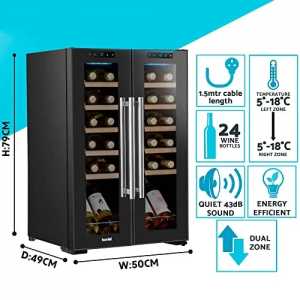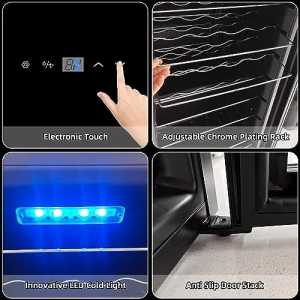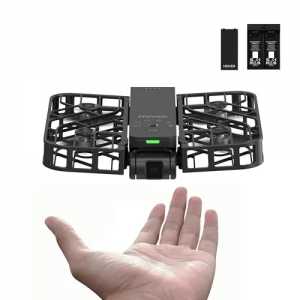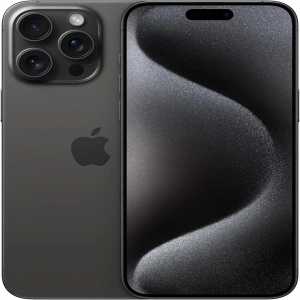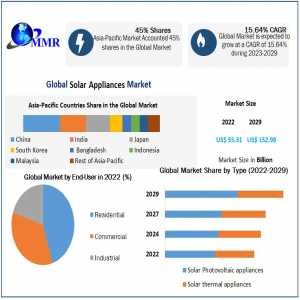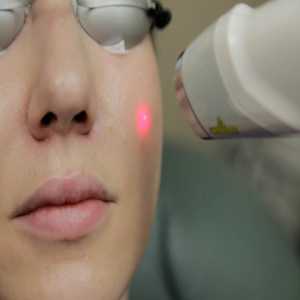
The Acoustic Camera Market: Revolutionizing Sound And Vibration Analysis

In a world filled with constant noise and complex mechanical systems, understanding sound and vibration patterns is crucial for industries ranging from automotive and aerospace to manufacturing and healthcare. Enter the acoustic camera a revolutionary technology that allows users to visualize and analyze sound sources in real time.
The acoustic camera market is experiencing significant growth as industries recognize the value of advanced sound and vibration analysis in optimizing processes, improving product quality, and ensuring safety. In this blog, we’ll explore what acoustic cameras are, how they work, their applications, market drivers, and future trends.
What Is an Acoustic Camera?
An acoustic camera is a high-tech device that combines traditional sound measurement techniques with advanced imaging technologies. By using microphone arrays (often placed in a grid pattern) along with infrared cameras, acoustic cameras can detect sound waves and create a visual representation of where those sounds are coming from. This is known as sound source localization.
The resulting images, often in the form of heatmaps or intensity maps, display sound sources as visual elements, making it easier to identify problematic noise, vibrations, or mechanical issues. Acoustic cameras are particularly useful in environments where precise sound source localization is needed for troubleshooting, quality control, or research.
How Does an Acoustic Camera Work?
Acoustic cameras operate by using a combination of microphones and camera technology. Here's how the process typically works:
- Microphone Array: The core of an acoustic camera is its microphone array, which consists of numerous microphones arranged in a pattern. Each microphone captures sound waves from different sources in the environment.
- Sound Wave Detection: As sound waves travel through the air, the microphones pick up the intensity and frequency of the sound waves at different locations in the array. The microphones work together to detect the direction and source of the sounds.
- Signal Processing: The acoustic camera uses advanced signal processing algorithms to analyze the data collected by the microphones. These algorithms identify the locations and intensities of the sound sources.
- Visual Representation: The data is then converted into a visual format, typically a 2D or 3D image or map. This map will show the sound intensity at different locations, often using color coding (e.g., red for high-intensity sounds and blue for low-intensity sounds).
- Real-Time Feedback: Many acoustic cameras offer real-time visualization, allowing users to detect sound sources on the fly and make immediate adjustments or interventions.
Key Applications of Acoustic Cameras
The versatility of acoustic cameras makes them invaluable across many industries. Here are some key sectors where acoustic cameras are making a significant impact:
- Automotive Industry: Acoustic cameras are widely used in automotive manufacturing to analyze and detect sources of unwanted noise (often referred to as NVH Noise, Vibration, and Harshness). They help engineers identify noise issues in vehicle components like engines, exhaust systems, tires, and HVAC systems, ultimately improving the comfort and performance of vehicles.
- Aerospace and Aviation: In the aerospace industry, acoustic cameras are used to detect and analyze noise sources in engines, landing gear, and other critical components of aircraft. They are also essential for compliance with noise regulations around airports and for improving the passenger experience by reducing cabin noise.
- Manufacturing and Industrial Applications: Acoustic cameras are used in factories to monitor machinery and equipment. They help identify mechanical issues such as leaks, loose parts, or abnormal vibrations that could lead to costly downtime. In quality control, they ensure that products meet noise level specifications.
- Building and Construction: Acoustic cameras are invaluable in building design and construction, particularly for ensuring soundproofing standards are met. They can be used to identify sound leaks in walls, windows, and doors, helping to optimize acoustics in offices, homes, and entertainment venues.
- Healthcare: In the healthcare sector, acoustic cameras are used in the medical device industry to detect and analyze the noise from machines like ultrasound equipment, MRI machines, and ventilators. Reducing unwanted noise levels in medical environments is essential for both patient comfort and equipment functionality.
- Environmental Monitoring: Acoustic cameras are also used for environmental noise monitoring. For example, they can help assess noise pollution near highways, factories, or airports, providing critical data for regulatory bodies to manage noise control in urban and rural environments.
Market Drivers of the Acoustic Camera Industry
The growing demand for acoustic cameras is driven by several key factors:
- Increasing Focus on Noise Control and Comfort: As noise pollution becomes an increasingly important issue, both in industrial and consumer environments, acoustic cameras are playing a key role in noise control. From reducing automotive noise to improving acoustics in buildings, the need for noise reduction is boosting the demand for acoustic camera technology.
- Advances in Signal Processing and Imaging Technology: Advances in microphone arrays, signal processing algorithms, and camera technology have enhanced the performance of acoustic cameras. These improvements allow for higher resolution, more accurate localization, and better real-time monitoring, making acoustic cameras more accessible and valuable across industries.
- Automated Diagnostics and Predictive Maintenance: In industries like automotive, aerospace, and manufacturing, the shift toward predictive maintenance is fueling the adoption of acoustic cameras. By detecting early signs of mechanical failure or inefficiencies, acoustic cameras allow for preventive maintenance, reducing downtime and extending the lifespan of equipment.
- Growing Demand for Quality Control: Companies are increasingly focused on maintaining high product quality, and acoustic cameras are a powerful tool in this pursuit. They are used in production lines to ensure that products meet stringent noise standards and that mechanical systems function optimally.
- Regulatory Pressures: Governments around the world are implementing stricter regulations around noise pollution, particularly in urban areas and near sensitive sites like airports or hospitals. Acoustic cameras help industries comply with these regulations by providing accurate noise measurements and visualizations.
Challenges in the Acoustic Camera Market
While the acoustic camera market is growing, it faces a few challenges:
- High Costs: The advanced technology behind acoustic cameras makes them relatively expensive, which can be a barrier for small and medium-sized businesses looking to implement them in their operations. However, as technology continues to improve and competition increases, prices are likely to become more accessible over time.
- Complexity of Use: Although acoustic cameras offer detailed and useful visualizations, interpreting the results can require specialized knowledge and training. Proper analysis of sound sources and their impact on operations may require experts in acoustics or engineering.
- Environmental Limitations: Acoustic cameras rely on clear sound signals to function effectively. In noisy environments or areas with high levels of ambient sound, it may be difficult to isolate specific sound sources, limiting the technology's effectiveness in some situations.
Future Outlook of the Acoustic Camera Market
The future of the acoustic camera market looks promising, with several trends likely to shape its growth:
- Miniaturization and Portability: As technology advances, there is a growing focus on making acoustic cameras smaller and more portable. This will allow for more flexible use in fieldwork and real-time inspections, particularly in industries like construction and environmental monitoring.
- Integration with Other Technologies: Acoustic cameras are increasingly being integrated with other technologies like AI, machine learning, and Internet of Things (IoT) sensors. This integration allows for more automated data analysis, predictive maintenance capabilities, and better decision-making in real time.
- AI-Driven Insights: The combination of acoustic cameras and artificial intelligence will enable automated identification of noise patterns, more accurate fault detection, and smarter diagnostics. This will improve efficiency and precision in industries like automotive, aerospace, and manufacturing.
- Increased Demand in Emerging Markets: As industrialization continues to expand in emerging economies, there will be growing demand for acoustic camera solutions to help manage noise pollution, optimize production processes, and improve product quality.
Conclusion
The acoustic camera market is revolutionizing the way industries approach sound and vibration analysis, providing innovative solutions for noise control, quality assurance, and predictive maintenance. As demand for more efficient, high-performance tools continues to rise, acoustic cameras will play an increasingly important role in a wide range of applications from automotive and aerospace to healthcare and environmental monitoring.
With ongoing advancements in technology, greater accessibility, and more industries adopting noise reduction practices, the acoustic camera market is well-positioned for sustained growth. Whether you're an engineer looking to optimize product performance or a company striving to meet regulatory requirements, acoustic cameras offer powerful insights that can help achieve operational excellence.
Author Bio
Article Comments
No Comments!
At present there are zero comments on this article.
Why not be the first to make a comment?
Similar Articles
Search Pages
User Upgrade
account to full use of editor,
Including hyperlinks
Article Categories
There are zero sub-categories in this parent category.
There are zero sub-categories in this parent category.
